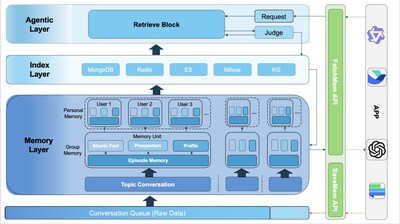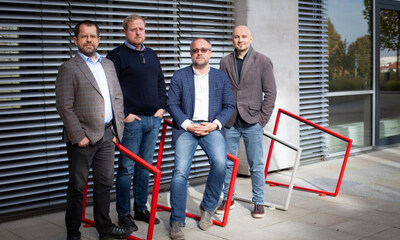Four in Ten STEM Professionals Say Age Disparity is a Struggle in Their Field, Modis Survey Finds
Press Releases
Nov 01, 2017
JACKSONVILLE, Fla., Nov. 1, 2017 /PRNewswire/ — When it comes to challenges in diversity, four in 10 (39 percent) of STEM professionals say that age disparity is the greatest conflict their field struggles to remedy, according to a new survey, “2017 STEM Workplace Trends” by Modis, a leading provider of information technology and engineering staffing. The survey of 1,500 U.S. adults who work as decision makers in Science, Technology, Engineering and Medical (STEM) fields, also found that 58 percent of respondents over the age of 55 weigh age disparity as the greatest challenge to overcome, while those under the age of 25 weigh gender as the greatest challenge to diversity in their field.
This data reveals that, while gender disparity is a prevalent societal problem for Millennial STEM professionals, ageism is a topic that causes more concern with Baby Boomers and should not be overlooked.
The survey explores the attitudes and beliefs of STEM professionals and decision makers as they relate to issues including recruitment and benefits, employer challenges and other trends impacting the current and future workplace.
“With more than half of STEM professionals ranking age and gender as the largest diversity struggle in their fields, employers need to be aware of these concerns and aim to make purposeful changes if they want to attract and retain top talent,” said John Marshall III, CEO, Modis. “In today’s candidate-driven market, it’s inherently important for employers to stand out from their competitors and to shine a light on how they are working to increase their diversity and inclusion efforts.”
Additional challenges facing STEM decision makers include sourcing candidates with the right skills to join and grow their teams. The survey found that teamwork and interpersonal skills are considered the most difficult qualities to find, even in top candidates, with more than 20 percent of respondents in each field having ranked these attributes of the highest importance. It can be inferred that while technical skills are crucial, decision makers in STEM fields recognize that soft skills remain imperative for top candidates to possess.
2022: Greatest Needs for Talent, Skills
The arrival of artificial intelligence and other innovative technologies has many people wondering what the future workplace will look like, and how to thrive amongst various digital disruptions. According to the survey, an overwhelming amount of tech professionals (64 percent) believe that artificial intelligence will make the biggest impact to their industry in the next five years, with more than half of respondents from all sectors expecting the same (56 percent). Drones, 3D printing and augmented reality were among the categories ranked, but seen as far less impactful.
When asked which industry will have the greatest need for increased technology talent in the next five years, more than a quarter of respondents (28 percent) in the technology sector believe it will be healthcare, and without much surprise, 22 percent of respondents believe it will be artificial intelligence, followed by government and energy (19 percent).
The majority of decision makers recognize the value of opportunity to advance in one’s career, ranking this as the most important factor to attract and retain talent, closely followed by salary compensation and raises. Fifty-eight percent of all STEM leaders surveyed suspect that workers in their field expect a salary that aligns with the market average for their roles, but 36 percent suspect that candidates expect salary compensation to be higher than the market average for their roles.
“With a continuous increase in demand for top STEM talent, especially in growing areas such as healthcare and AI, employers will need to offer competitive compensation and benefits to attract these qualified candidates,” said Trent Beekman, president of recruitment solutions at Modis. “Many companies are willing and able to pay the necessary bump in compensation, which is driving competition.”
To encourage top candidates to leave their current employers, the survey also found that 87 percent of respondents from all sectors are willing to offer compensation increases that start from three percent to as high as 15 percent. Of those respondents, decision makers in the tech field (34 percent) indicate that they are most willing to offer the highest increase, at an increment of 10 to 15 percent.
To help retain their current workforce, 74 percent of STEM decision makers are planning to offer their employees a bonus this year, and of those, 45 percent plan to offer a bonus between six and 10 percent.
What Will Make the Biggest Impact on STEM?
“Sometimes business disruptors are inevitable, but the best STEM decision makers have contingency plans in place, starting with a skilled workforce,” said Ger Doyle, president of enterprise solutions at Modis. “During situations where a company must take reactive measures, a reliable team helps minimize productivity loss and maintain customer confidence.”
When asked which technology trends will be their company’s biggest security threat, external threats ranked the highest (46 percent), followed by big data storage (26 percent), internal threats (17 percent) and point of sale breach (10 percent).
Moreover, when asked to rank recent political policies in order of how much they will impact the tech industry overall, cybersecurity and privacy ranked highest against the Affordable Care Act, high-speed internet access, patent policy, net neutrality, apprenticeship executive order and H-1B visas.
For more information on Modis’ survey, please visit 2017 STEM Workplace Trends.
To download the 2017 Modis Salary Guide featuring insights in leading STEM positions around the U.S., please visit Modis.com.
Methodology
Allison+Partners Research + Insights team surveyed 1,500 individuals who identified as STEM (Science, Technology, Engineering, and Medical) decision makers responsible for hiring. The survey was fielded using the Qualtrics Insight Platform, who also provided the panel. Fielding was executed between August 11 to August 27. In this survey, STEM is defined as Science, Technology, Engineering and Medical. Science and Medical field professionals’ responses were grouped together.
About Modis
Modis is the world leader in comprehensive IT and engineering recruitment and workforce solutions, connecting best-in-class companies in virtually every industry with niche talent for both temporary and permanent assignments. With keen industry insight, tenacity and unmatched depth of expertise, Modis understands the world of IT and engineering, as well as the people who practice it. It is this understanding that empowers Modis to help both clients and candidates make exceptional connections in today’s complex world of work. Modis is a true powerhouse in the field of IT and engineering staffing, offering the most expansive talent base, branch network and global reach available in today’s workforce. For additional information, please visit www.modis.com.
View original content:http://www.prnewswire.com/news-releases/four-in-ten-stem-professionals-say-age-disparity-is-a-struggle-in-their-field-modis-survey-finds-300547000.html
SOURCE Modis



